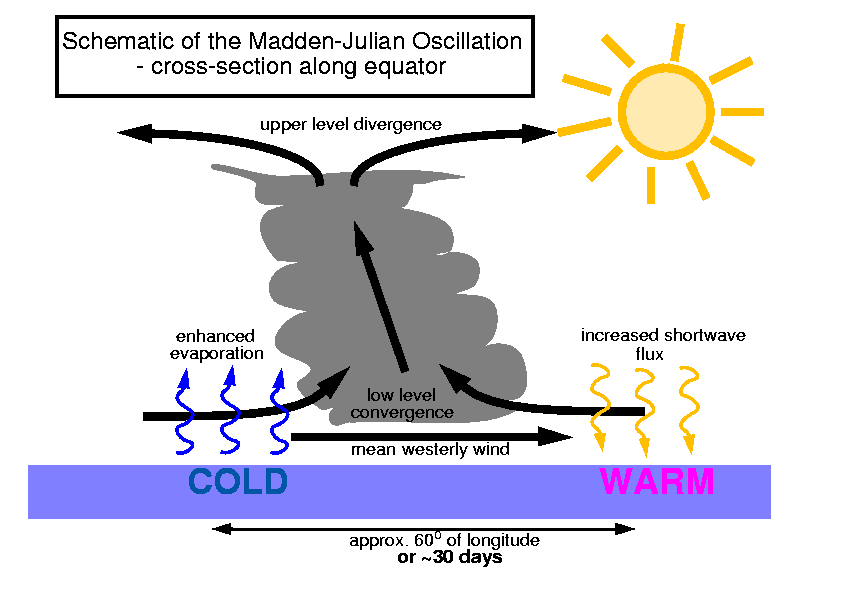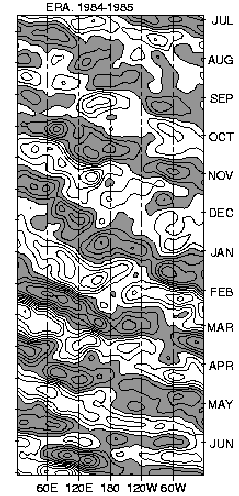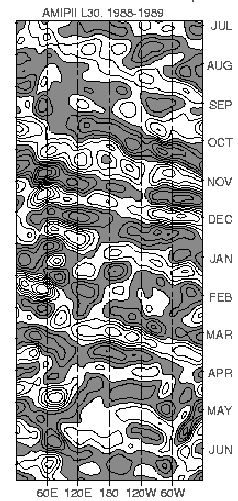The pictures show a fairly standard way of looking at the Madden-Julian Oscillation. They are time/longitude plots of 200 hPa velocity potential, averaged between 10N and 10S, and filtered with a 20-100 day band-pass filter. Velocity potential (VP) is an indicator of the large scale divergent flow, so at upper levels in the tropics, negative VP anomalies (shaded on the diagrams) are closely tied to the divergent outflow from enhanced convective regions.
Time runs down the vertical axis of the plots and longitude runs along the horizontal axis. VP anomalies which propagate towards the east show up as diagonal bands running from upper left to lower right. Such bands are very clear on the left hand picture which shows VP anomalies from the ECMWF reanalyses. The time taken for these anomalies to propagate once around the equator is about 45-60 days. The right hand figure is taken from one year of a Unified Model AMIPII integration with 30 vertical levels. Propagating anomalies can still be seen but they are less coherent and have a faster phase speed. There are several occasions when they appear to break down altogether.
The MJO is more than just a signal in the upper level wind field. Accompanying this signal is a region of enhanced convection which develops in the Indian Ocean, propagates eastwards over the Maritme Continent and finally dies out over the cooler waters east of the dateline. This "envelope" of enhanced convection is in turn accompanied by fluctuations in surface winds and fluxes of heat into and out of the ocean surface. These fluctuations induce SST anomalies, with warm anomalies to the east of the convection and cold anomalies to the west. It is believed that these SST anomalies are, at least in part, the reason why the convective region propagates eastward and so the MJO should be considered as a coupled ocean-atmosphere phenomenon. The schematic diagram below summarizes the main aspects of the MJO.

A schematic representation of the MJO, shown as a cross-section along the equator in the Indian Ocean-west Pacific sector. West is to the left and east is to the right.




